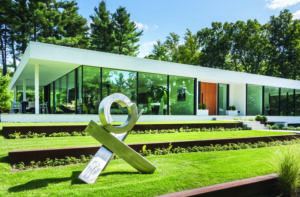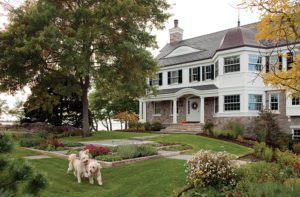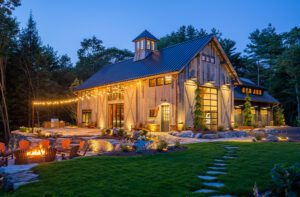The Old House
May 1, 2012
Text by Debbie Hagan Photography by Courtesy of the National Park Service, Adams National Historical Park
It’s hard to imagine so much history packed into a house Abigail Adams once called “a wren’s nest.” Yet the Old House served not only as home to John and Abigail Adams, but to their son, John Quincy Adams, and his wife as well as to two more generations. In fact, the house and its contents remained in the family until it became a museum and part of the National Park Service in 1946.
“This makes us so unique,” says Kelly Cobble, curator of the fourteen-acre Adams Historical Park. “Everything in the house belonged to the family.” That includes 6,000 objects on exhibit, as well as 14,000 volumes of books.
The original home dates back to 1731, built by Major Leonard Vassell, a wealthy Jamaican sugar grower. The Paneled Room, with walls made of Santo Domingo mahogany, reflect this earlier period. Abigail thought them too dark and whitewashed them. Years later a grandson restored them.
Abigail added the Long Room to the “nest” in 1800, doubling the home’s size. Cobble describes this room as most intact, with wallpaper dating from around 1900 and some of the Adamses own furnishings reflecting the Adamses’ tastes. John acquired the Louis XV settee and a dozen chairs during his diplomatic service in Holland and France, and he and Abigail bought the fire screens in England, where they lived for a time.
The second major addition to the house was John’s study on the second floor—a substantial upgrade from the one he’d set up in a farm outbuilding. Here, he kept his books, a collection of Chinese export porcelain and the 1775 French secretary upon which he signed, in 1783, the Peace Treaty of Paris. The room also contains rare, matching terrestrial and celestial globes, purchased by John Quincy Adams, showing the most up-to-date discoveries as of 1799.
With Abigail’s additions, the “nest” grew into what she called “The Mansion.” Later generations referred to it as the “Old House.” To John Adams, however, the bucolic farm represented tranquility. He looked around at the orchards and gardens and called them “peace fields.”
Editor’s Note: Adams National Historical Park is open daily through Nov. 10, 9 a.m.–5 p.m. 135 Adams St., Quincy, Mass., (617) 773-1177, www.nps.gov/adam/.
Share
![NEH-Logo_Black[1] NEH-Logo_Black[1]](https://www.nehomemag.com/wp-content/uploads/2022/08/NEH-Logo_Black1-300x162.jpg)


















You must be logged in to post a comment.